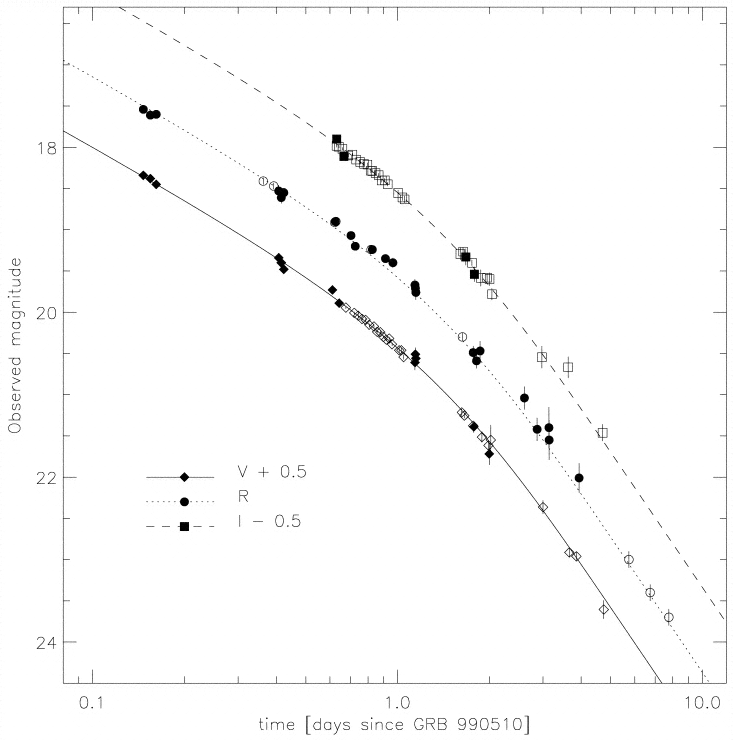
However, in 1997, it was conclusively shown that GRBs are trillions of miles away, so people struggled to understand why they are still so bright, as seen here on Earth. One possible solution to this dilemma is if the radiation is not being emitted in all directions, like a lamp bulb, but instead is highly beamed in a direction that happens to hit the Earth (this demands, since we don't believe these beams are targeted, that there are many many more GRBs that we can't see, since they are pointed in other directions). If the radiation is beamed, then we can deduce that the bursts are not really as bright as we thought they were.
How can we tell if they are beamed? Well, we use an effect of general relativity. If the radiation is coming to us from a jet that is moving at a speed close to the speed of light, then we can only see a small part of the jet: the part moving right at us. As the jet plows into the inter-stellar material around it, it slows down, and we can see more of it. It is also getting dimmer, but because we can see more of it, the dimming rate is relatively slow. At some point it slows down enough so that we see the whole jet, and after that, the normal dimming rate continues more rapidly: we can't add any more glowing material to make it look brighter.
Here is an example of just such a "jet break":
